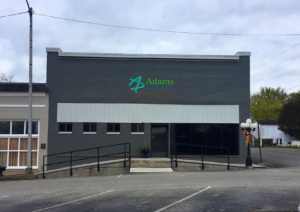Almost everyone will experience tooth decay at some point in his or her life. Restorative dentistry treats all phases of tooth decay, from simple cavity fillings to entire tooth replacements.
Crowns
A crown is a permanent covering that fits over an original tooth that is either decayed, damaged or cracked. Crowns are made of a variety of different materials such as porcelain, gold, acrylic resin or a mix of these materials. Porcelain generally has the most natural appearance, although it is often less durable.
If you have a tooth that is chipped, cracked, badly decayed, or otherwise weakened, our dentist may suggest a crown for your treatment. Crowns maintain the esthetic appearance of teeth by covering the entire visible surface of the tooth, while adding significant reinforcement and protection to the tooth. After removing all areas of decay, we will take an impression of the tooth to be crowned and send it to the dental laboratory to create the crown. Porcelain crowns are extremely natural looking and virtually indistinguishable from other teeth, making them an ideal choice for visible teeth.
Partials/Dentures
There are different types of partials and dentures, but they share their common function. They replace teeth that have become loose or been lost due to bone loss. The entire mouth is examined and a determination is made as to which teeth will have to be removed, and which will remain. The loose teeth are then extracted. Dentures are fitted to go over or around whatever teeth remain in the mouth, depending on the type. There is an adjustment period after dentures are placed in the mouth, and it can take some getting used to. Often implants can used to further stabilize the dentures.
Dental Implants
Dental implants mirror the size and shape of a patient’s natural tooth. This implant is often as strong as the patient’s original tooth. The implant or artificial root is placed into the jawbone under local anesthesia, then allowed to heal and integrate with the bone. Once the healing process is completed and the jawbone is attached to the implant, the patient returns to the dental office where the implant is fitted with the new tooth. This process generally takes anywhere from three to eight months. Dental implants can last for decades when given proper care.
Fixed Bridges
A bridge is a dental device that fills a space that a tooth previously occupied. A bridge may be necessary to prevent:
- Shifting of the teeth that can lead to bite problems (occlusion) and/or jaw problems and resultant periodontal disease.
- Bridges safeguard the integrity of existing teeth and help maintain a healthy, vibrant smile.
Fixed bridges can improve chewing and esthetic appearance, restoring the smile with a more permanent solution than dentures. Bridges replace missing teeth with artificial teeth. We will prepare the adjacent teeth and take an impression of the area to send to the send to the laboratory to prepare a customized bridge. The bridge is set into place and the artificial tooth is securely cemented to the adjacent teeth, restoring the attractive natural appearance and functionality of the tooth that was lost.
Root Canal Therapy
A root canal is a procedure that extracts decayed pulp from the central part of the tooth, reshapes the canal and replaces it with strengthening filler. This preserves the tooth and retains its original integrity; thereby, saving a tooth that in the past would have to have been pulled.
The inside of each tooth is filled with “pulp,” which carries the tooth’s blood supply and nerves. If bacteria gain access to the pulp, through a fracture or deep cavity, the pulp may become infected, leading to pain and a risk of tooth loss. In a root canal, your dentist will remove the infected pulp and replace it with a rubber sealant. The tooth is then sometimes covered with a protective crown, which reinforces the tooth against future fractures and enhances the tooth’s appearance. Root canals have an extremely high success rate in saving teeth that would otherwise be lost to infection. The only alternative to root canal therapy is a tooth extraction.
Tooth Extractions
An extraction is the complete removal of a tooth. Depending on the complexity of the case, an extraction can be performed surgically or non-surgically. A mild anesthesia is used to ensure your child is as comfortable as possible throughout the procedure.
There are a number of different reasons a tooth may need to be extracted (pulled). Some teeth are removed because they are severely decayed; others may have advanced periodontal disease or have broken in a way that cannot be repaired. In some cases, the tooth is simply not repairable, with decay extending far below the gum-line extensive bone loss due to periodontal disease. Learn more about tooth extractions.
Sedation Dentistry
A trip to the dentist is something most people do not look forward to. At Adams Dental, we make every effort to be gentle to our patients. We are sensitive to the needs of each patient and do our best to make each office visit a positive experience. We care about each one of our patients and treat them with gentle, loving care.



